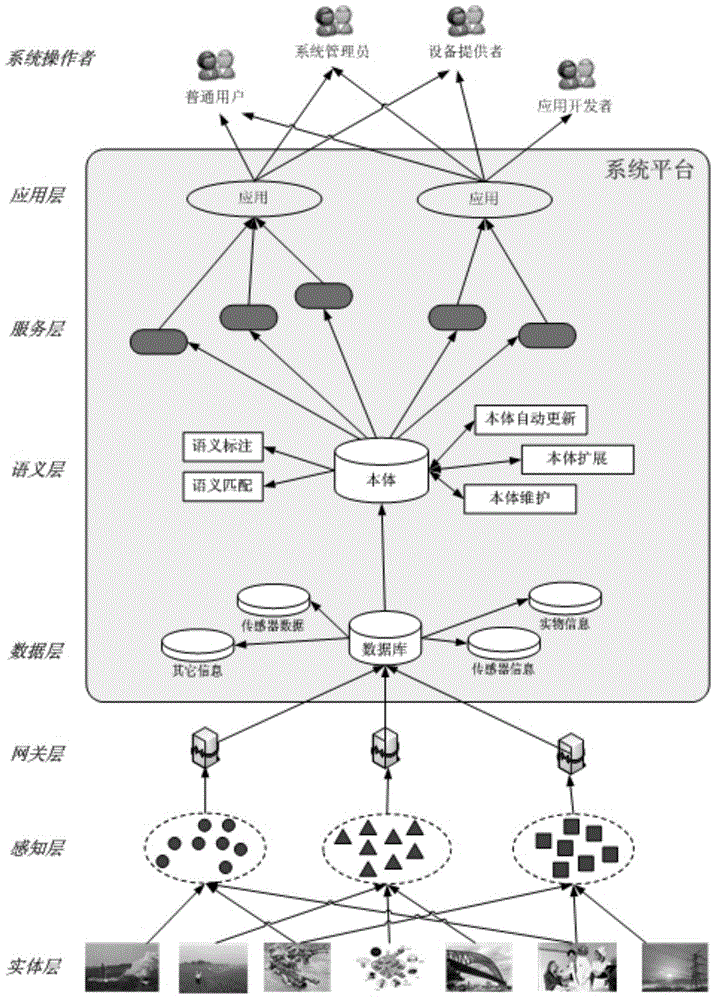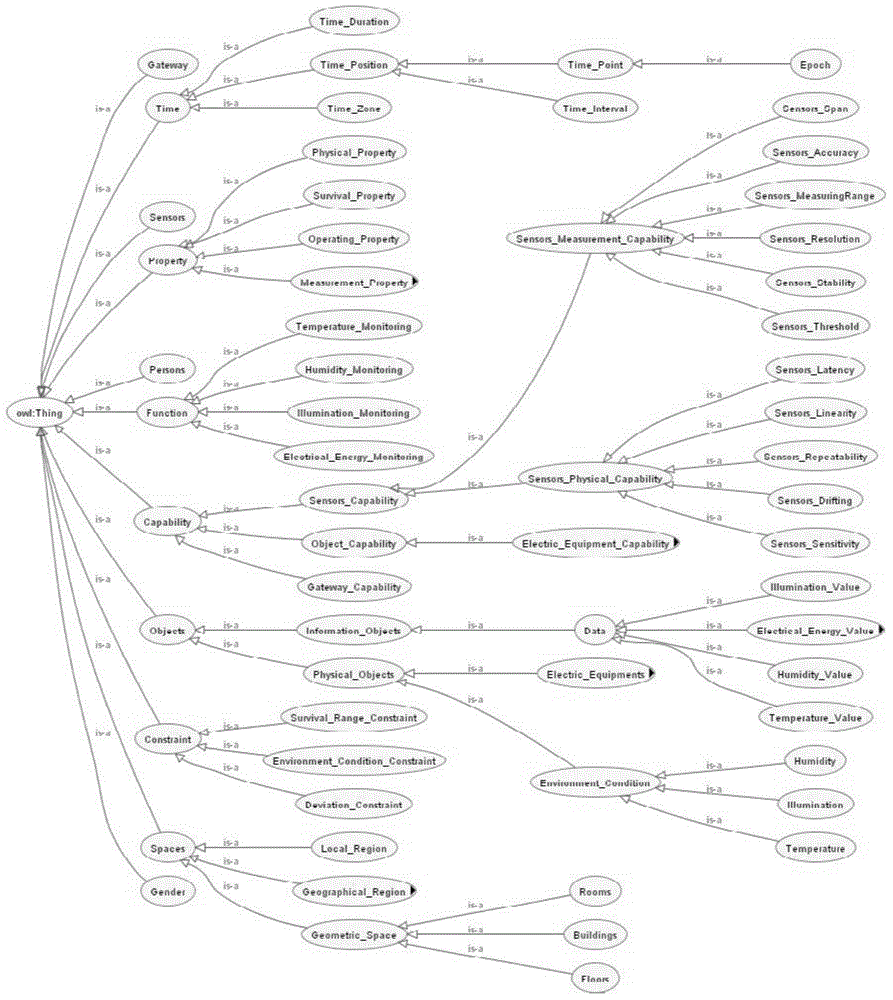Internet of Things architecture model based on semantics
An architecture and technology of the Internet of Things, applied in transmission systems, general control systems, control/regulation systems, etc., can solve the problems of lack of semantic relationship between devices and lack of semantic attributes of data, so as to improve interoperability and achieve intelligent The effect of service and effective sharing
- Summary
- Abstract
- Description
- Claims
- Application Information
AI Technical Summary
Problems solved by technology
Method used
Image
Examples
Embodiment Construction
[0029] The present invention will be described in further detail below in conjunction with the accompanying drawings.
[0030] Such as figure 1 As shown, through the semantic processing of data, the expression ability of data is enhanced, the effective sharing, reuse, integration and access of data are realized, the interoperability of resources is improved, and intelligent services are realized. The specific structure levels are as follows:
[0031] Entity layer: This layer includes all perceived entities and is the provider of data sources, which is used to provide perception and operation objects for services and applications.
[0032] Perception layer: This layer includes the equipment of the perception entity, which is the acquirer of the data source, used to monitor the perception entity, collect entity data and perform preliminary data processing. The equipment on this layer mainly includes temperature sensors, humidity sensors, light sensors, electric energy sensors,...
PUM
 Login to View More
Login to View More Abstract
Description
Claims
Application Information
 Login to View More
Login to View More - R&D
- Intellectual Property
- Life Sciences
- Materials
- Tech Scout
- Unparalleled Data Quality
- Higher Quality Content
- 60% Fewer Hallucinations
Browse by: Latest US Patents, China's latest patents, Technical Efficacy Thesaurus, Application Domain, Technology Topic, Popular Technical Reports.
© 2025 PatSnap. All rights reserved.Legal|Privacy policy|Modern Slavery Act Transparency Statement|Sitemap|About US| Contact US: help@patsnap.com


